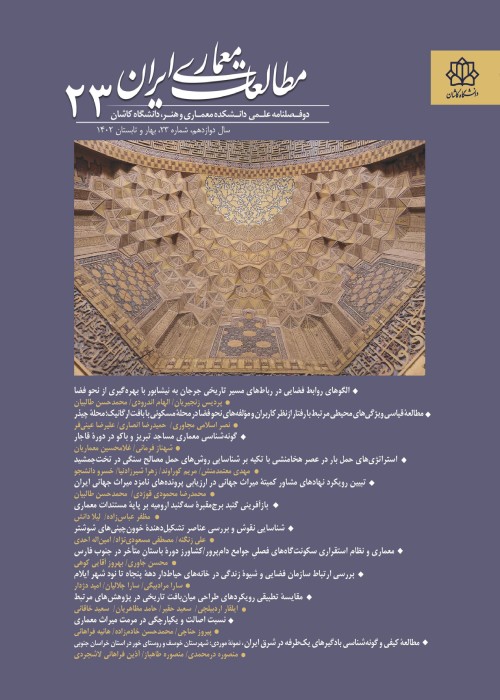The Network of Madis and the Urban Development of Isfahan along the Safavid Era
Author(s):
Abstract:
Natural factors are among essential dimensions that shape a city and guide its development. Mountains, rivers, coastlines and valleys are among these factors. Water supply, among others, has an important role in the life and flourishing of a city. In every settlement, the solution to this is considered a part of its urban culture. The Zayandeh-Rud River has been a significant element which has guided the urban development of Isfahan throughout different periods. However, the way of this impact has not yet been adequately investigated. The network of madis is considered one of the most important parts of the Zayandeh-Rud River, which has influenced the development of Isfahan. This network had affected the initial location of Isfahan; the direction of urban development; the structure of the historical core and the Bazaar route; the location of the Safavid governmental quarters; the location of new quarters particularly in the Safavid period; the irrigation of suburban gardens; the underground water levels used for residential purposes, and etc. At first, madis were used for irrigating agricultural lands. Later, however, they connected and formed the initial urban core of Isfahan. Specifically, the madi of Fadin functioned as infrastructure in the development of the spatial organization of Isfahan. The research employs the content analysis method and interpretive-historical approach. Information is analyzed through documentary and library research. Studies demonstrate that following a booming population growth in the Safavid period, new madis were built according to the new urban structure. The network of madis has had great influence on the design of the Safavid governmental quarters, as well as on other urban quarters and key facilities. Before the Safavid period, the urban development of Isfahan was mainly influenced by natural forces, specifically the Zayandeh-Rud River and its network of madis. However, during the Safavid period, there were plural forces which guided the urban development of Isfahan. Finally, a map of madis is re-drawn based on documentary and comparative studies of the historical maps of Isfahan showing the location of the main buildings and the relation of the spatial organization of pre-Safavid Isfahan with the network of madis.
Keywords:
Language:
Persian
Published:
Journal of Iranian Architecture Studies, Volume:5 Issue: 10, 2017
Pages:
207 to 228
magiran.com/p1666053
دانلود و مطالعه متن این مقاله با یکی از روشهای زیر امکان پذیر است:
اشتراک شخصی
با عضویت و پرداخت آنلاین حق اشتراک یکساله به مبلغ 1,390,000ريال میتوانید 70 عنوان مطلب دانلود کنید!
اشتراک سازمانی
به کتابخانه دانشگاه یا محل کار خود پیشنهاد کنید تا اشتراک سازمانی این پایگاه را برای دسترسی نامحدود همه کاربران به متن مطالب تهیه نمایند!
توجه!
- حق عضویت دریافتی صرف حمایت از نشریات عضو و نگهداری، تکمیل و توسعه مگیران میشود.
- پرداخت حق اشتراک و دانلود مقالات اجازه بازنشر آن در سایر رسانههای چاپی و دیجیتال را به کاربر نمیدهد.
In order to view content subscription is required
Personal subscription
Subscribe magiran.com for 70 € euros via PayPal and download 70 articles during a year.
Organization subscription
Please contact us to subscribe your university or library for unlimited access!


